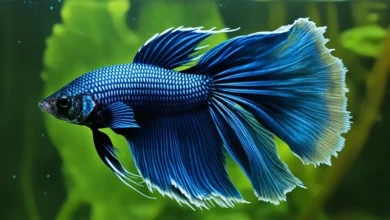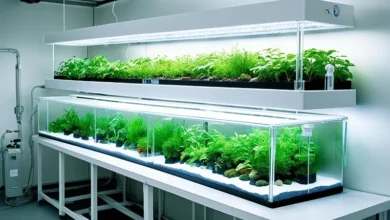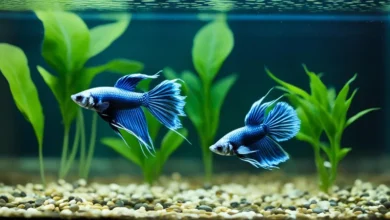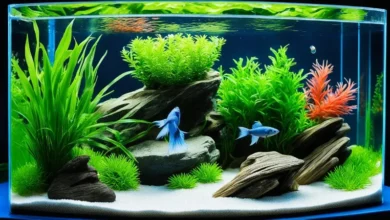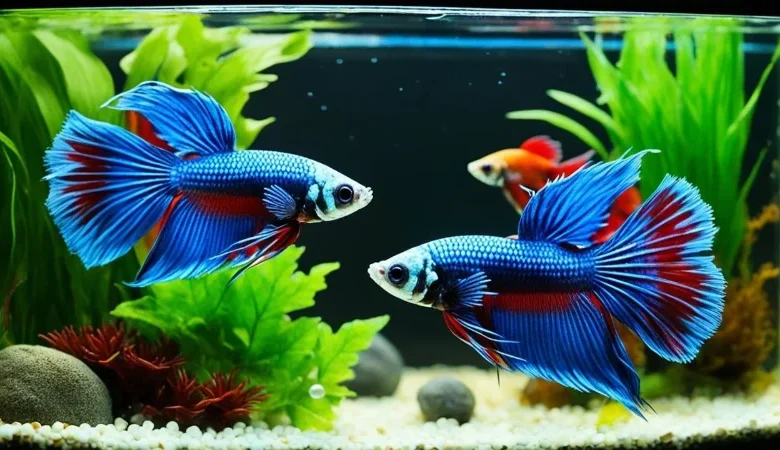
Are you a beginner betta enthusiast looking to venture into the exciting world of betta breeding? Wondering how to successfully breed betta fish at home? Look no further! This comprehensive step-by-step guide is here to help you navigate the fascinating journey of betta breeding.
But wait, you may think is betta breeding too complicated for beginners? Can I breed betta fish without prior experience?
Well, get ready to challenge those beliefs! In this guide, we will demystify the process of betta breeding and provide you with all the essential techniques and tips needed to breed betta fish with confidence. By the end, you’ll be equipped with the knowledge and tools to embark on this rewarding adventure.
So, are you ready to dive into the world of betta breeding? Let’s get started!
Essential Equipment for Betta Breeding
Having the right equipment is crucial for successful betta breeding. In this section, we will discuss the essential equipment needed to create a suitable breeding environment for your bettas.
The Right Aquariums for Each Breeding Stage
Choosing the appropriate aquariums for each stage of the breeding process is essential for the well-being of your bettas. It is important to provide the right size and conditions to ensure the success of breeding. For breeding pairs, a spacious and well-maintained tank is crucial. When it comes to rearing the fry, a separate rearing tank is recommended to prevent them from being eaten by the adult bettas.
Optimal Filtration and Heating for Bettas
Filtration and heating are vital for maintaining the ideal water conditions required for betta breeding. A high-quality filtration system helps to remove impurities and maintain water quality, while a reliable heater ensures a consistent temperature for betta fish. It is essential to choose equipment that is suitable for betta fish and can provide the necessary filtration and heating capabilities.
Accessories to Create a Healthy Breeding Environment
In addition to basic equipment, accessories like plants, rocks, caves, and breeding nets can enhance the breeding environment for bettas. Live plants improve water quality and provide hiding spots. Rocks and caves offer shelter during breeding. Breeding nets can separate the female after breeding to prevent male aggression.
Preparing Your Betta Pair for Breeding
Before starting the breeding process, it is essential to prepare your betta pair for optimal results. Proper preparation ensures the health and success of the breeding process, leading to a higher chance of successfully raising a batch of vibrant and healthy betta fry.
Criteria for Selecting a Healthy Breeding Pair
When selecting a betta breeding pair, there are specific criteria to consider that will help ensure the health and genetic diversity of the offspring. Look for the following signs of good health and desirable characteristics:
- Physical Condition: Choose bettas that are active, alert, and free from any visible signs of illness or disease.
- Color and Finnage: Select breeding pairs with vibrant colors and well-developed finnage, as these traits are often passed down to the offspring.
- Body Shape: Opt for bettas with a symmetrical and streamlined body shape, as this indicates good overall health.
- Age: Breeding age for bettas is usually around 4-12 months for both males and females. Avoid breeding bettas that are too young or too old, as their reproductive capabilities may be compromised.
- Temperament: It is important to select bettas with compatible temperaments. Aggressive or overly territorial bettas may exhibit aggression during breeding, potentially harming each other.
By carefully considering these criteria, you can choose a betta pair that possesses the best potential for producing healthy and high-quality offspring.
Conditioning Techniques for Improved Spawning Success
Conditioning your bettas before spawning is crucial for optimizing their health and reproductive capabilities. Proper conditioning increases the chances of successful spawning and ensures the well-being of both the male and female betta. Here’s how to do it effectively:
- Feed a Nutritious, High-Protein Diet: Incorporate foods like live or frozen brine shrimp, daphnia, bloodworms, and blackworms. A well-balanced diet provides the necessary nutrients and energy that are essential for bettas during the breeding process.
- Adjust Water Temperature: Gradually increase the water temperature to around 80-82°F (26-28°C). This temperature range mimics their natural breeding conditions and stimulates the bettas’ reproductive instincts.
- Create a Comfortable Environment: Provide hiding spots and plants in the breeding tank. These hiding spots serve as areas where the female can retreat to minimize stress during the breeding process.
- Introduce Bettas Gradually: Gradually introduce your bettas to each other in a controlled manner, closely monitoring their behavior. This allows them to become familiar with one another and reduces the risk of aggression during breeding.
By following these steps, you can create an optimal environment for your bettas, promoting successful spawning and maintaining their health throughout the breeding process.
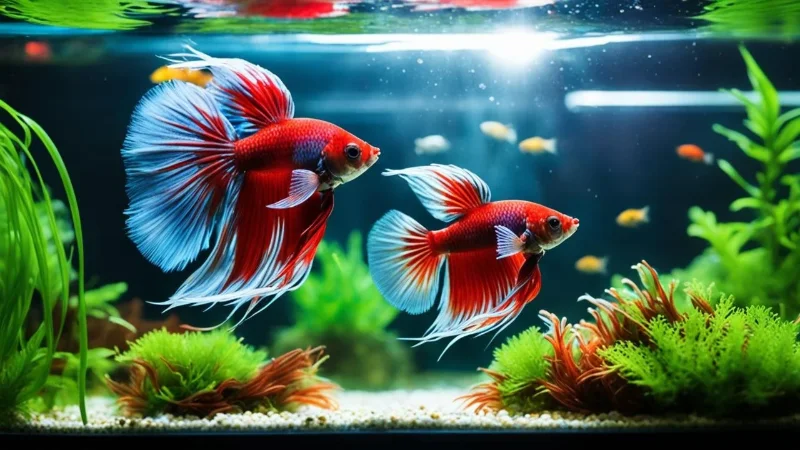
Implementing these conditioning techniques will significantly enhance the chances of successful spawning and ensure the overall well-being of your betta pair.
Setting Up the Perfect Betta Breeding Environment
Creating the perfect breeding environment is essential for the successful reproduction of betta fish. By following the instructions below, you can ensure that your bettas have the ideal conditions to breed:
- Choose the right tank: Select a tank specifically designed for breeding bettas. A rectangular tank with a capacity of at least 10 gallons is recommended to provide enough space for the pair and their offspring.
- Set the water parameters: Maintain a temperature of 78-80°F (25-27°C) and a pH level between 6.5 and 7.0. Use a reliable aquarium heater and thermometer to monitor and maintain these parameters consistently.
- Add suitable substrate: Use fine-grained substrates such as sand or smooth gravel to mimic the natural habitat of bettas. Avoid rough or sharp materials that could harm the fish.
- Create hiding spots: Introduce live plants, rocks, or other decorations to provide hiding spots for the female betta during the breeding process. These hiding spots reduce stress and make the female feel more secure.
- Ensure proper lighting: Bettas prefer dimly lit environments, so avoid intense or direct lighting. Use low-intensity aquarium lights or consider adding floating plants to create a more natural ambiance.
- Monitor water quality: Regularly test the water parameters, including ammonia, nitrite, and nitrate levels. Use a reliable water testing kit to ensure a stable and healthy environment for betta breeding.
By carefully setting up the breeding tank and maintaining ideal conditions, you can create an environment that promotes the successful reproduction of betta fish.
Understanding Betta Breeding Behaviors
Understanding betta fish behavior during breeding is key to success. Observing their courtship and mating rituals helps breeders recognize their readiness to spawn, increasing the chances of successful breeding.
Recognizing Courtship and Mating Rituals
During courtship, male bettas display vibrant colors, flare their fins, and build bubble nests to attract females. They may chase the female to initiate breeding. Close observation ensures the female is receptive. Once ready, the male performs the “nuptial embrace,” during which the female releases eggs for the male to fertilize and place in the bubble nest for protection.
Creating a Safe Space for Female Bettas
Creating a safe space for female bettas is crucial to reduce stress and aggression during breeding. Provide ample hiding spots with live plants or decorations, and ensure the aquarium is spacious to accommodate both bettas comfortably. A secure, roomy environment minimizes aggression and promotes a successful breeding experience.
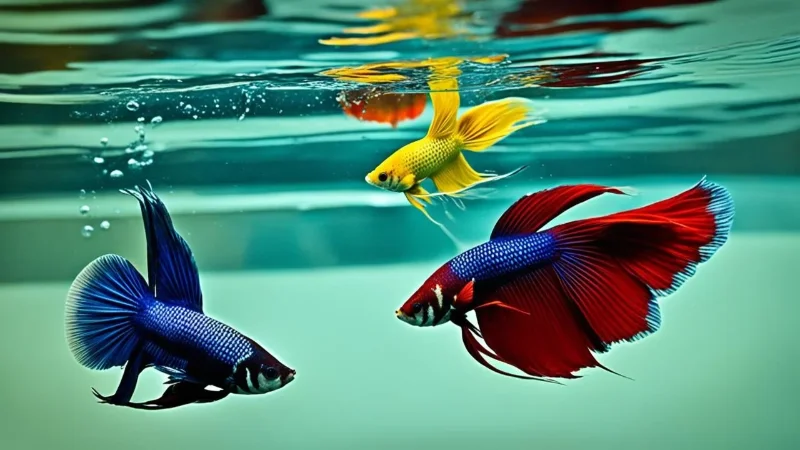
To successfully breed bettas, observe their breeding behaviors and create a safe, stress-free environment for the female. This increases the chances of successful spawning and healthy fry.
How to Initiate the Betta Breeding Process
Once the betta pair has been prepared and the breeding environment set up, it is time to initiate the breeding process. Follow the step-by-step guide below to successfully initiate betta breeding.
- Introduce the Pair: Carefully place the male and female betta fish into the breeding tank. Ensure that the tank provides ample space for the pair to interact and spawn.
- Observe Spawning Behaviors: Watch closely as the male betta begins to build a bubble nest at the water’s surface. This nest serves as a safe place for the eggs to be deposited once spawning occurs.
- Evaluate Female’s Willingness: Monitor the female’s behavior for signs of receptiveness. When she displays horizontal stripes and flares her fins while approaching the male, it indicates her willingness to spawn.
- Trigger Spawning: To initiate spawning, the male will wrap himself around the female, embracing her and encouraging her to release her eggs. This process can take several hours and may involve chasing and flaring between the pair.
- Remove the Female: After spawning, it is crucial to remove the female from the breeding tank to prevent her from getting injured or killed by the male. Place her in a separate tank with similar water conditions.
Following these steps will help you successfully initiate the betta breeding process and ensure the health and well-being of both the male and female bettas. Remember to closely monitor the breeding tank and make any necessary adjustments to maintain optimal conditions for the fry.
Betta Breeding for Beginners: How to Create Optimal Conditions
Maintaining proper water parameters is essential for the health and success of betta breeding. Betta fish are sensitive to their environment, so it’s crucial to ensure that the water conditions are optimal.
To maintain optimal water parameters, it’s important to:
- Keep the water temperature between 78-80°F (25-27°C) as bettas prefer warm water for breeding.
- Maintain a pH level between 6.5-7.5 to create a neutral to slightly acidic environment.
- Provide clean, properly filtered water to eliminate toxins and maintain good water quality.
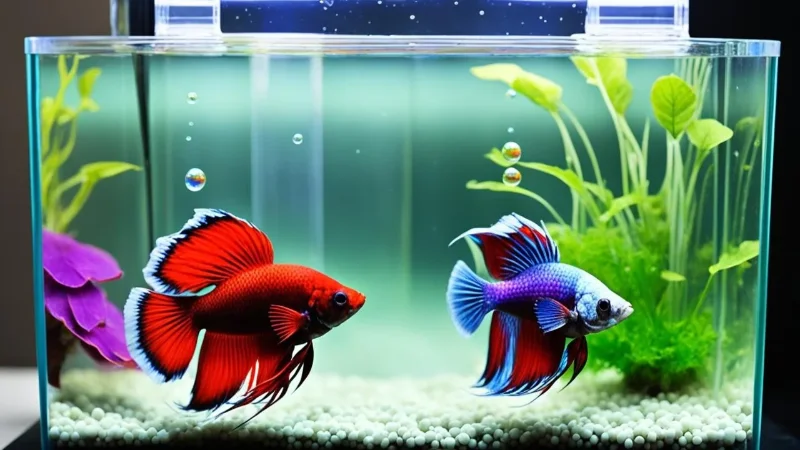
Understanding the Role of Indian Almond Leaves and Live Plants
Indian Almond Leaves and live plants are essential for a healthy betta breeding environment. Indian Almond Leaves prevent diseases with their antifungal and antibacterial properties, create a calming effect, and simulate bettas’ natural habitat. Live plants offer hiding spots, reduce stress, improve water quality, and stimulate breeding behavior, enhancing the overall well-being of the fish.
Feeding Your Betta Fry Properly
Proper feeding is crucial for the growth and development of betta fry. Here’s a simple guide:
- Initial Stage: Yolk Sac Absorption
- Betta fry rely on their yolk sacs for the first 24 to 48 hours after hatching.
- Do not introduce any food until the yolk sacs are fully absorbed.
- Early Feeding: Post-Yolk Sac Absorption
- Food Options: Infusoria (e.g., Paramecium) and powdered commercial fry food.
- These options provide essential nutrients that are easy for the fry to digest.
- Intermediate Stage: Introducing Brine Shrimp
- Gradually introduce newly hatched brine shrimp as the fry grows.
- Brine shrimp are highly nutritious and provide an excellent source of protein.
- Feed in small, frequent meals to prevent overfeeding and digestive issues.
Managing the Microworm Culture as Fry Nourishment
Microworms are an excellent supplemental food source for betta fry due to their high protein content and ease of cultivation.
- Setting Up a Culture: Use a small container with a moist bedding material like oatmeal or yeast paste. Add microworms to the bedding material.
- Maintaining the Culture: Keep the culture at optimal temperature and humidity. Microworms will quickly multiply, providing a continuous live food supply.
Transitioning to Brine Shrimp as Betta Fry Mature
As betta fry mature, their nutritional needs evolve, necessitating a transition to more substantial food sources.
- Begin the transition at around two weeks of age.
- Feeding Process: Hatch the eggs in salt water or use a commercial brine shrimp hatchery. Rinse brine shrimp with fresh water to remove excess salt before feeding.
- Monitoring and Adjustment: Continuously monitor the fry’s growth and adjust their feeding schedule and portion sizes as needed. Keep the fry tank clean and well-aerated to ensure optimal health and growth.
For healthy betta fry growth, start with infusoria and powdered fry food, then switch to microworms, and finally transition to brine shrimp. Regularly monitor their growth and keep their environment clean.
Conclusion
In conclusion, breeding betta fish can be fascinating and rewarding for beginners. This guide provides all the necessary steps to breed bettas successfully at home. By following these guidelines and maintaining optimal conditions, you can confidently raise healthy betta fry.
We covered selecting the right breeding pair, creating a suitable environment, understanding breeding behavior, and proper feeding techniques for fry. Remember, patience and attention to detail are crucial. With the knowledge from this guide and continuous learning, you can enjoy the exciting journey of betta breeding and watch new life flourish.
FAQ
What is the essential equipment needed for betta breeding?
The essential equipment for betta breeding includes appropriate aquariums for each stage of the breeding process, optimal filtration and heating systems, and accessories that create a healthy breeding environment for bettas.
How do I select a healthy betta-breeding pair?
When selecting a betta breeding pair, look for signs of good health, such as vibrant colors, active behavior, and intact fins. It is also important to choose bettas with desirable characteristics, such as long fins or specific color patterns.
How can I improve the chances of successful betta spawning?
To improve the chances of successful spawning, it is essential to condition the betta pair properly before breeding. This includes providing a nutritious diet, maintaining optimal water conditions, and introducing the pair to each other gradually.
What is the ideal environment for betta breeding?
The ideal environment for betta breeding includes a properly set up breeding tank with suitable water conditions, such as a stable temperature, appropriate pH level, and clean water. The tank should also have hiding spots and live plants to create a stress-free environment for the bettas.
What are the courtship and mating behaviors of bettas?
During the breeding process, bettas exhibit courtship and mating behaviors. The male betta displays his vibrant colors and flares his fins to attract the female. The female responds by showing horizontal stripes on her body, indicating her receptiveness to the male. Mating involves the male wrapping his body around the female and releasing his sperm.
How do I initiate the betta breeding process?
To initiate the betta breeding process, introduce the male and female bettas into the breeding tank. Observe their behavior for signs of courtship and mating. Once spawning occurs, the female should be removed from the tank to prevent aggression from the male.
What are the proper water parameters for betta breeding?
The proper water parameters for betta breeding include maintaining a temperature between 78-82°F (25-28°C), a pH level of around 7.0, and clean water with minimal ammonia and nitrite levels. It is also beneficial to add Indian almond leaves to the tank, as they create a natural environment and have antibacterial properties.
What should I feed my betta fry?
Betta fry should be fed a combination of infusoria, microforms, and baby brine shrimp. Infusoria are tiny aquatic organisms that can be cultured at home, while microworms and baby brine shrimp are commercially available as live foods for fry. Gradually transition the fry to larger food options as they grow.
How can I maintain the microworm culture as a source of nourishment for the fry?
To maintain a healthy micro worm culture, keep the culture in a controlled environment with appropriate temperature and moisture levels. Feed the microworms a nutritious substrate, such as oatmeal or bread, and provide proper air circulation. Regularly harvest the micro worms for feeding your betta fry.
When should I transition my betta fry to brine shrimp?
Once the betta fry have grown to a size where they can consume larger food, usually around 1-2 weeks old, you can begin introducing them to baby brine shrimp. Brine shrimp provide a nutritious food source and help stimulate the fry’s growth and development.
